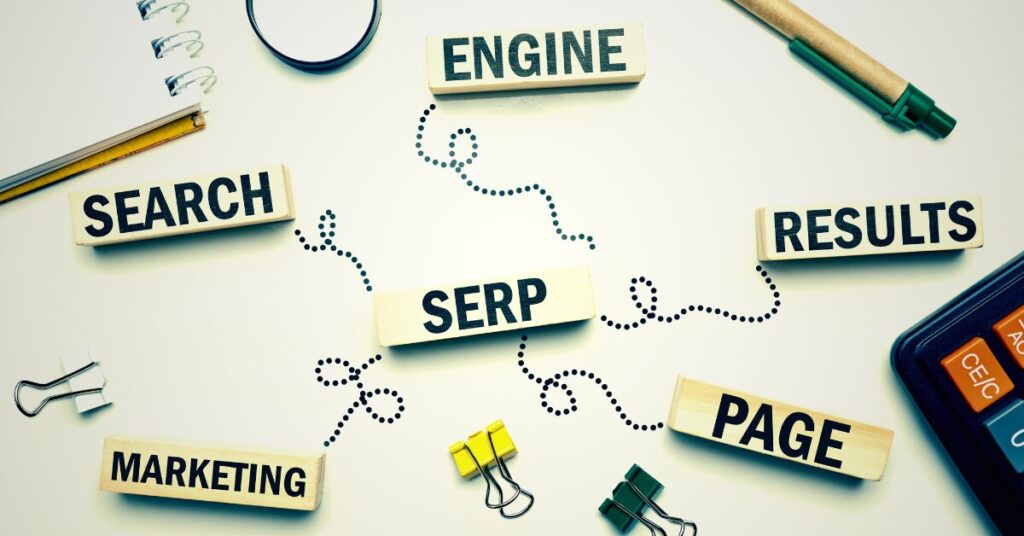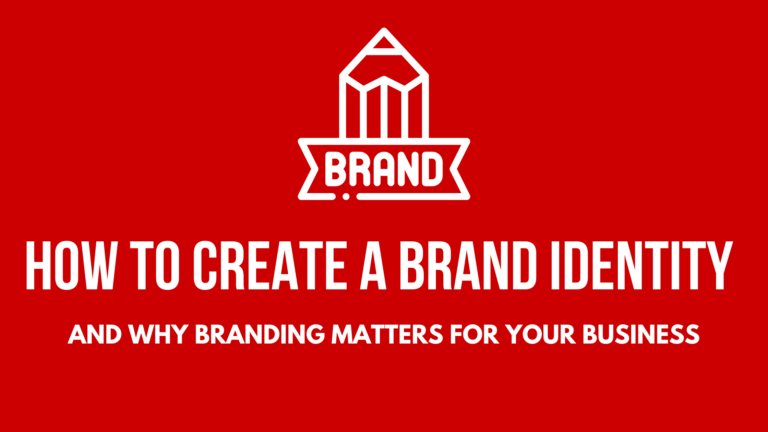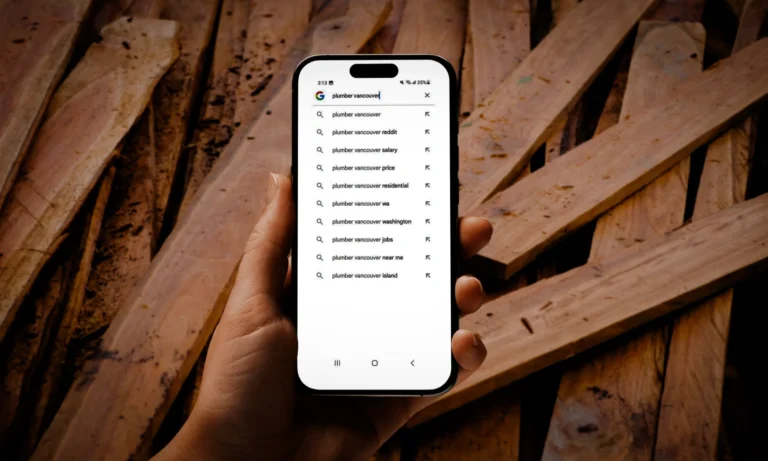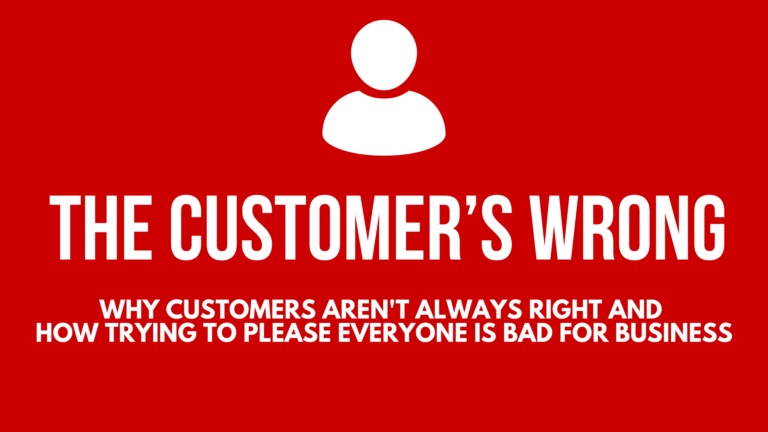

The 5 Best Places to Spend Your Marketing Budget in 2025
As the business landscape evolves, so do marketing strategies. in 2025, it’s more critical than ever to invest your marketing dollars wisely. The digital movement has unlocked unprecedented business opportunities, but knowing where to focus your budget can make or break your success.
A marketing budget is a financial plan that outlines the resources allocated to marketing activities for a specific period, typically a year or a quarter. It acts as a roadmap for businesses, helping to guide their marketing efforts while ensuring that spending stays within predetermined limits. The primary goal of a marketing budget is to maximize the impact of marketing campaigns, allowing businesses to achieve their marketing objectives—whether that’s increasing brand awareness, generating leads, or driving sales—while maintaining financial efficiency.
Components of a Marketing Budget:
- Personnel Costs:
- This includes salaries, wages, and benefits for the marketing team or any external agencies hired to handle marketing tasks. Personnel costs are often the largest portion of a marketing budget, especially for businesses that manage marketing in-house.
- It may also include costs for training and development to ensure the team is up-to-date with industry trends and new technologies.
- Advertising and Media Spend:
- This section covers the costs associated with paid advertising campaigns, both online and offline. It includes spending on:
- Digital ads (Google Ads, social media ads, display ads)
- Traditional ads (TV, radio, print)
- Out-of-home advertising (billboards, transit ads)
- Depending on the marketing strategy, these channels can consume a significant portion of the marketing budget.
- This section covers the costs associated with paid advertising campaigns, both online and offline. It includes spending on:
- Content Creation:
- Content is key to most marketing efforts, whether it’s for digital marketing, social media, or traditional media. This includes the costs of:
- Creating written content, blog posts, and articles
- Producing videos, graphics, and other multimedia
- Photography for websites, ads, and social media platforms
- Expenses related to hiring writers, designers, photographers, videographers, and other content creators also fall under this category.
- Content is key to most marketing efforts, whether it’s for digital marketing, social media, or traditional media. This includes the costs of:
- Technology and Tools:
- Modern marketing relies on various tools and software to automate processes, track performance, and enhance customer engagement. This category covers:
- Customer Relationship Management (CRM) software
- Email marketing tools (e.g., Mailchimp, Constant Contact)
- Marketing automation tools (e.g., HubSpot, Marketo)
- Analytics tools (e.g., Google Analytics, SEMrush)
- Social media management tools (e.g., Hootsuite, Buffer)
- These tools come with subscription fees, licenses, and maintenance costs that are essential for running efficient marketing campaigns.
- Modern marketing relies on various tools and software to automate processes, track performance, and enhance customer engagement. This category covers:
- Market Research and Data Analysis:
- Conducting market research to understand customer needs, behaviors, and market trends is vital for shaping effective marketing strategies. This may include:
- Surveys, focus groups, and customer feedback
- Industry reports and competitive analysis
- Consumer data collection and analysis tools
- The costs of research firms, consultants, or internal teams dedicated to gathering and interpreting data are included in this category.
- Conducting market research to understand customer needs, behaviors, and market trends is vital for shaping effective marketing strategies. This may include:
- Public Relations and Events:
- If a business uses public relations (PR) strategies, the marketing budget will also include costs for:
- Press releases, media outreach, and reputation management
- Sponsorships, partnerships, and events (both virtual and physical)
- Trade shows, conferences, and webinars
- These activities are meant to enhance brand image, build relationships with media outlets, and create networking opportunities for the business.
- If a business uses public relations (PR) strategies, the marketing budget will also include costs for:
- Influencer Marketing:
- Many businesses allocate funds for influencer collaborations, where influencers or industry experts promote their products or services. The budget for this includes:
- Payments to influencers
- Costs for product placement, giveaways, or affiliate programs
- Content production related to influencer campaigns
- Many businesses allocate funds for influencer collaborations, where influencers or industry experts promote their products or services. The budget for this includes:
- Promotions and Discounts:
- Promotional costs are tied to marketing strategies that aim to drive immediate sales or customer actions, such as:
- Discounts, limited-time offers, and seasonal promotions
- Loyalty programs or referral incentives
- Free trials or giveaways
- While these activities often drive short-term sales, they can impact the long-term brand positioning and profitability if not managed effectively.
- Promotional costs are tied to marketing strategies that aim to drive immediate sales or customer actions, such as:
- Branding and Design:
- The design and maintenance of a brand’s visual identity, which includes the logo, color scheme, fonts, packaging, and other visual assets, also fall under the marketing budget. This includes:
- Hiring designers or agencies
- Costs of brand audits and updates
- Designing marketing materials like brochures, banners, and other printed collateral
- The design and maintenance of a brand’s visual identity, which includes the logo, color scheme, fonts, packaging, and other visual assets, also fall under the marketing budget. This includes:
- Miscellaneous Expenses:
- This category can include any other marketing-related expenses that don’t fit neatly into the above categories, such as:
- Travel costs for marketing events or conferences
- Subscriptions to industry publications or memberships
- Shipping costs for promotional materials or product samples
- Contingency funds for unexpected marketing opportunities or needs
Why a Marketing Budget is Important:
- Helps with Prioritization: By allocating a set amount of money to each category, businesses can prioritize their most impactful marketing activities. It ensures resources are directed toward the most effective strategies.
- Maximizes ROI: An optimized budget ensures that every dollar spent contributes to measurable outcomes, minimizing waste and improving the effectiveness of campaigns.
- Tracks Performance: A marketing budget helps track spending against planned expenses, providing insights into areas of over or under-investment. This allows businesses to make adjustments in real-time to ensure continued success.
- Ensures Financial Control: Without a budget, marketing efforts can easily spiral out of control, leading to overspending or underfunding. A budget provides a clear framework for financial planning and accountability.
In summary, a marketing budget is a comprehensive financial plan that outlines the costs associated with all marketing efforts, from advertising and content creation to technology and personnel. It enables businesses to align their marketing strategies with their financial goals, optimize spending, and track the effectiveness of campaigns, ultimately contributing to the growth and success of the business.
Why Should You Optimize Your Marketing Budget
Optimizing your marketing budget is crucial for maximizing the return on investment (ROI) and ensuring your resources are being used as efficiently as possible. By strategically allocating funds across the right channels, you can increase visibility and engagement without overspending. An optimized budget allows businesses to identify the most effective strategies and tactics, ensuring that every dollar spent drives results.
It also enables better tracking and measurement of campaign performance, providing valuable insights into what works and what doesn’t. As market conditions and consumer behavior evolve, regularly reassessing and optimizing your budget helps businesses stay agile and competitive, ensuring that marketing efforts are aligned with business goals and market demands. Ultimately, an optimized marketing budget leads to better financial outcomes and sustainable growth.
1. Content Marketing: The Cornerstone of Digital Success
Content marketing continues to dominate the digital space, offering unmatched ROI when executed effectively. By creating valuable, engaging, and consistent content, businesses can attract and retain their target audience while building long-term trust.
Content marketing is not just about creating blog posts or social media updates; it’s about crafting a comprehensive strategy that aligns with your audience’s needs and your business goals. In 2025, successful content marketing will prioritize storytelling, personalization, and addressing the pain points of your customers. By leveraging formats like video, infographics, and interactive elements, you can boost user engagement and dwell time on your platforms. Furthermore, evergreen content—such as guides and how-tos—can continue driving traffic and leads long after its publication, making it one of the most sustainable marketing budget investments.
Why Invest in Content Marketing?
- SEO Impact: High-quality content fuels search engine optimization (SEO), improving your website’s rankings and visibility on Google.
- Lead Generation: Blogs, whitepapers, and case studies provide opportunities to capture leads through gated content.
- Thought Leadership: Position your brand as an industry expert and build credibility.
- Cost-Effectiveness: Content marketing generates three times as many leads as outbound marketing and costs 62% less.
Where to Focus in 2025:
- Video Content: Short-form videos on platforms like TikTok, Instagram Reels, and YouTube Shortshttps://www.youtube.com/shorts/a3fSb-C2I_I are seeing exponential growth.
- AI-Generated Content: Use tools like ChatGPT to generate ideas and streamline content creation while maintaining a human touch.
- Interactive Content: Quizzes, polls, and interactive infographics engage users and keep them on your website longer.
- Localized Content: Leverage local SEO strategies to target specific demographics.
Pro Tip: Maintain a content calendar and use analytics tools like Google Analytics 4 (GA4) to measure your content’s performance.
2. Paid Advertising: Precision Targeting for Maximum ROI
Paid advertising remains a cornerstone of effective marketing strategies. With advancements in ad targeting and measurement tools, 2025 offers new opportunities to refine your approach.
The digital advertising space is becoming increasingly sophisticated, with platforms offering advanced options to pinpoint your ideal audience. Paid ads are not only a way to generate traffic but also an opportunity to gather actionable data about your customers’ preferences and behaviors. The key is to focus on the platforms where your audience spends the most time. Whether it’s Google Search Ads for high-intent users or TikTok Ads for younger demographics, tailoring your ad strategy to your audience ensures the best return on investment for your marketing budget. Pair this with dynamic creative optimization to serve the right ad to the right user at the right time.
Why Invest in Paid Ads?
- Immediate Results: Unlike organic efforts, paid ads deliver quick visibility and traffic.
- Advanced Targeting: Platforms like Google Ads and Facebook Ads allow for hyper-specific audience targeting.
- Scalability: Start with a small ad marketing budget and scale up as you see results.
Where to Focus in 2025:
- Google Performance Max Campaigns: These campaigns leverage AI to optimize across all Google properties, from YouTube to Gmail.
- Social Media Advertising: Platforms like Instagram, LinkedIn, and TikTok offer powerful ad tools tailored to diverse audiences.
- Programmatic Advertising: Use AI to automate ad placement, ensuring your ads reach the right people at the right time.
- Native Advertising: Seamlessly integrate your ads into editorial content to enhance engagement.
Pro Tip: Always A/B test your ad creatives and monitor performance using tools like Facebook Ads Manager or Google Ads Insights.
3. Influencer Marketing: Leveraging Trust and Authenticity
Influencer marketing has matured into a mainstream strategy, and its effectiveness continues to grow. In 2025, brands that form authentic partnerships with influencers will see significant returns.
In modern society, consumers trust recommendations from individuals more than traditional advertising. Influencer marketing allows brands to tap into established communities and build credibility quickly. By working with influencers whose values align with your brand, you can foster genuine connections with potential customers. Additionally, influencer content often doubles as high-quality user-generated content (UGC) that can be repurposed for other marketing channels. In 2025, brands that focus on long-term collaborations rather than one-off campaigns will see greater success.
Why Invest in Influencer Marketing?
- High Engagement: Influencers have loyal followers who trust their recommendations.
- Access to Niche Audiences: Micro-influencers offer access to highly specific target groups.
- Improved ROI: Businesses earn $5.20 for every $1 spent on influencer marketing.
Where to Focus in 2025:
- Micro-Influencers: Collaborate with influencers who have 10,000 to 100,000 followers for cost-effective campaigns.
- Video Collaboration: Partner with influencers for short-form and long-form video content.
- Niche Platforms: Explore influencers on platforms like Pinterest, Twitch, and Reddit.
- Affiliate Partnerships: Combine influencer marketing with affiliate programs to track performance and incentivize conversions.
Pro Tip: Use platforms like Aspire or Upfluence to identify and manage influencer relationships efficiently.
4. Email Marketing: The Evergreen Strategy
Despite the rise of new marketing channels, email marketing remains one of the most effective ways to nurture leads and convert them into paying customers.
Email marketing’s longevity is a testament to its effectiveness. With personalization capabilities and automation, email campaigns can deliver highly targeted messages at the perfect time. In 2025, successful email strategies will focus on providing real value to subscribers through educational content, exclusive offers, and personalized recommendations. Moreover, with the growing importance of privacy, building a high-quality email list organically is more important than ever. By combining compelling copy with visually appealing designs, you can create emails that drive action without overwhelming your audience.
Why Invest in Email Marketing?
- High ROI: For every $1 spent, email marketing generates $42 in revenue.
- Personalization: Tailored email campaigns increase engagement and conversions.
- Retention: Keep your audience informed and engaged over time.
Where to Focus in 2025:
- Automation: Use tools like Mailchimp or HubSpot to automate email sequences.
- Segmentation: Categorize your audience based on behaviour, preferences, and demographics.
- Interactive Emails: Incorporate features like polls, quizzes, or embedded videos.
- AI-Driven Insights: Leverage AI to optimize subject lines, send times, and content.
Pro Tip: Regularly clean your email list to improve deliverability and engagement metrics.
5. Social Media Marketing: The Heartbeat of Modern Branding
Social media marketing remains essential for brand awareness and customer engagement. The landscape in 2025 will favour brands that focus on authentic connections and dynamic content.
Social media has evolved far beyond posting updates; it’s now a hub for customer interactions, storytelling, and even direct sales. Platforms like TikTok and Instagram are leading the charge with innovative features that drive engagement and conversions. The key to social media success in 2025 is consistency and authenticity. Users value brands that show personality and engage meaningfully. Incorporating user-generated content, live streams, and behind-the-scenes glimpses can humanize your brand. Additionally, leveraging analytics to refine your strategy ensures you’re always delivering content that resonates.
Why Invest in Social Media?
- Broad Reach: Platforms like Facebook, Instagram, TikTok, and LinkedIn boast billions of active users.
- Community Building: Create loyal communities around your brand.
- Real-Time Feedback: Interact directly with customers and gain insights into their preferences.
Where to Focus in 2025:
- Short-Form Video: TikTok, Instagram Reels, and YouTube Shorts are the most engaging content formats.
- Social Commerce: Enable direct purchasing through platforms like Instagram Shopping and Facebook Shops.
- AI-Enhanced Posting: Use tools like Buffer or Hootsuite to optimize posting times and content.
- Employee Advocacy: Encourage employees to share company content for organic reach.
Pro Tip: Track your performance with analytics tools like Sprout Social or Brandwatch.
Maximizing Your Marketing Budget in 2025
To achieve the best results, it’s essential to allocate your marketing budget strategically across these five areas. Here are some tips to get started:
- Set Clear Goals: Define what success looks like for your business (e.g., lead generation, brand awareness, sales).
- Measure ROI: Use analytics tools to track the performance of each marketing channel.
- Stay Agile: Continuously test and refine your strategies based on what works.
- Leverage AI: AI tools can optimize campaigns, saving time and improving results.
- Integrate Channels: Combine strategies like email marketing and social media for a cohesive customer journey.
Conclusion
By investing in content marketing, paid advertising, influencer partnerships, email campaigns, and social media, you can create a robust strategy that drives measurable results and maximize the return on investment for your marketing budget. Remember, the key to success lies in staying informed, adaptable, and customer-focused. Allocate your budget wisely, and you’ll position your brand for sustained growth and success in the coming year.
A well-structured marketing budget is not just a financial tool—it’s a strategic necessity. Without it, businesses risk spreading their resources too thin, failing to capitalize on the most effective marketing channels, or worse, overspending on initiatives that don’t yield results. By strategically allocating resources and tracking expenditures, a marketing budget helps businesses make informed decisions, stay focused on their objectives, and drive growth. Whether you’re investing in digital advertising, content creation, or market research, every dollar should be spent with purpose, ensuring it delivers maximum return.
The key to success lies in not just creating a budget, but actively managing and optimizing it as market conditions evolve. Businesses that regularly review and adjust their marketing budgets are better positioned to take advantage of emerging opportunities, outpace competitors, and achieve long-term growth. If you’re ready to take control of your marketing spend and make every dollar work harder for your business, it’s time to start planning your next marketing budget with precision.
Reach out today, and let us help you develop a strategy that maximizes ROI and propels your business to the next level.






